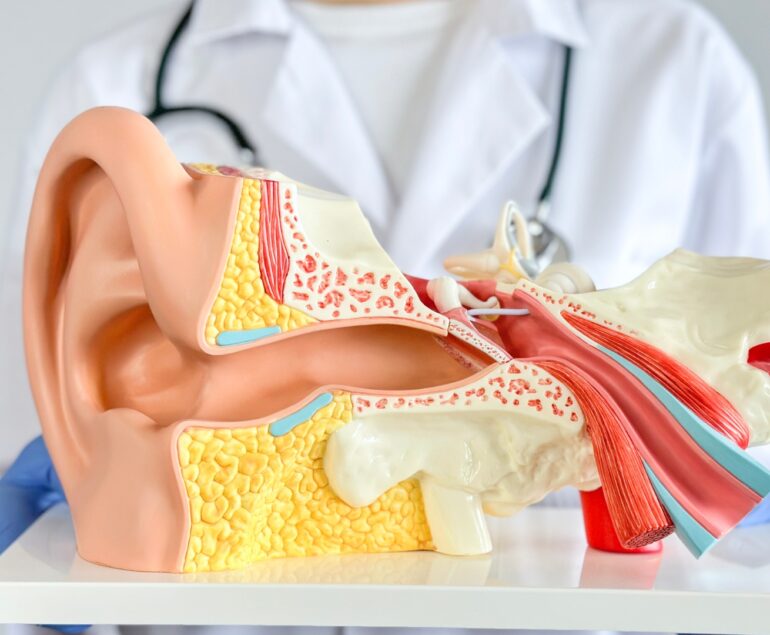Facial paralysis can be a challenging condition, impacting not just physical health but also emotional well-being. As Dr. Vivek Kumar Pathak, an experienced ENT Surgeon, sheds light on this topic, it becomes crucial to delve into the causes, symptoms, and treatment options available for those affected.
I. Introduction
Welcome to a comprehensive exploration of facial paralysis, a condition that Dr. Vivek Kumar Pathak considers paramount for understanding. This blog post aims to provide valuable insights into the causes and treatment of facial paralysis.
II. What is Facial Paralysis?
Facial paralysis is a condition characterized by the loss of facial muscle function, leading to a lack of facial expression control. Understanding the difference between temporary and permanent paralysis is vital for those seeking knowledge in this area.
III. Causes of Facial Paralysis
Various factors contribute to facial paralysis, ranging from neurological issues to trauma, infections, and underlying medical conditions. Unraveling these causes is essential in formulating effective treatment plans.
IV. Signs and Symptoms
Recognizing the signs and symptoms early on can be pivotal for timely intervention. From drooping on one side of the face to difficulty closing the eye, these indicators demand attention for proper diagnosis.
V. Diagnosis
Dr. Pathak stresses the importance of a comprehensive diagnostic process, involving a thorough medical history review and specialized tests. Early diagnosis significantly improves the chances of successful treatment.
VI. Treatment Options
This section delves into the array of treatment options available, from medications and physical therapy to surgical interventions. Each case is unique, and the treatment approach may vary accordingly.
VII. Rehabilitation and Recovery
Rehabilitation plays a crucial role in the recovery journey. Dr. Pathak recommends tailored rehabilitation programs to enhance muscle function and overall well-being.
VIII. Emotional Impact
Beyond the physical challenges, facial paralysis can take a toll on mental health. Recognizing and addressing the emotional impact is essential for holistic care.
IX. Success Stories
Inspirational stories of individuals who triumphed over facial paralysis serve as beacons of hope. Dr. Pathak shares these stories to motivate and uplift readers facing similar challenges.
X. Prevention
Preventive measures are explored to reduce the risk of facial paralysis. Dr. Pathak advocates for a healthy lifestyle as a preventive strategy.
XI. Expert Insights
In an exclusive interview, Dr. Vivek Kumar Pathak provides expert insights into facial paralysis. His professional opinion enhances the depth of understanding for readers.
XII. Case Studies
Real-life cases are examined, offering a nuanced view of the journey from diagnosis to recovery. These cases provide practical insights for both patients and medical professionals.
XIII. Advances in Treatment
This section explores recent advancements in facial paralysis treatment, shedding light on potential breakthroughs and future possibilities.
XIV. Support Systems
Information about support groups and resources is provided to create a sense of community for individuals navigating the challenges of facial paralysis.
XV. Conclusion
In conclusion, understanding facial paralysis goes beyond medical knowledge; it requires empathy and a community that supports those affected. By raising awareness, this article aims to contribute to a more informed and compassionate approach to facial paralysis.
FAQs
- What is facial paralysis, and how does it occur?
- Facial paralysis is the loss of facial muscle function, often resulting from issues like neurological conditions, trauma, infections, or medical conditions.
- What are the common signs of facial paralysis?
- Signs include drooping on one side of the face, difficulty closing the eye, and impaired facial expression control.
- How is facial paralysis diagnosed?
- Diagnosis involves a comprehensive process, including a detailed medical history review and specialized tests to pinpoint the underlying cause.
- What treatment options are available for facial paralysis?
- Treatment may include medications, physical therapy, and surgical interventions tailored to the individual’s unique condition.
- How important is early intervention in facial paralysis cases?
- Early intervention significantly improves treatment outcomes by addressing the condition promptly and effectively.
About Author:
Dr. Vivek Kumar Pathak: Renowned ENT Surgeon, Senior Professor, and Founder.
Dr. Pathak, ENT surgeon at Kailash Hospital, Senior ENT Professor at Sharda University, and founder of Entegrity Care, brings expertise and innovation to healthcare. Discover the visionary behind Doxtreat Healthcare, shaping the future of ENT care.
Website www.drvivekpathak.com
Call +917838450942
WhatsApp +91 78384 50942
Book an appointment with Dr. Vivek kumar Pathak by filling the form.



